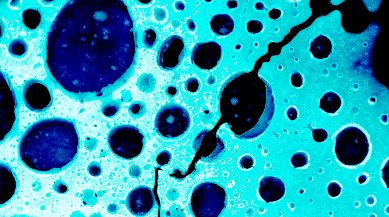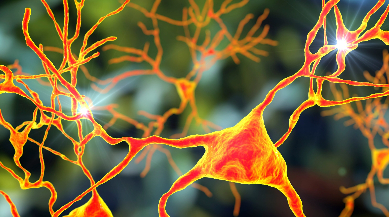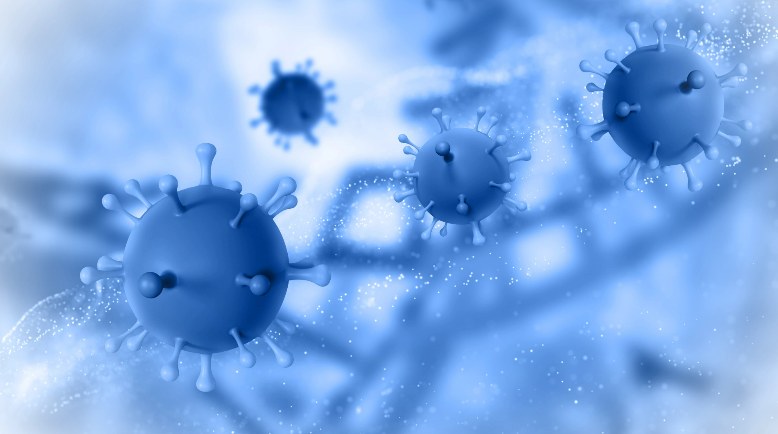Diseases are a product of the complex interactions occurring within the tissue microenvironment. A greater understanding of the cell-cell and cell-matrix communication is essential to develop new strategies for precision medicine and targeted therapies.
Read this blog to understand how the tissue microenvironment maintains homeostasis, how it influences the pathogenesis of various diseases and how a deep interrogation of this tissue microenvironment is crucial for developing new targeted therapies.
What is the tissue microenvironment?
The tissue microenvironment is made up of various dynamic cellular and non-cellular components and is unique to a particular tissue or organ. It comprises heterogeneous components such as the insoluble extracellular matrix (ECM), immune cells, stromal cells, blood vessels, extracellular vesicles (EVs), other soluble biochemical signaling molecules such as growth factors and hormones, and pH and oxygen gradients. Together, these components interact with one another and build an effective regulatory network that supports tissue function to remain in homeostasis.
The cells in the tissue microenvironment keep a check on disease progression and responses to external stimuli such as infection or injury in that tissue by responding to signals that direct cell behavior and influence their survival, proliferation, and immune response.
The importance of the tissue microenvironment
The cellular organization within the tissue microenvironment is intentional. Certain cell types are strategically organized at various distances inside the tissues, thus enabling intercellular crosstalk in two and three-dimensions.
This is like a trampoline; if someone stands on one end, it will influence whoever else is standing there. This is precisely what drives the initiation and progression of diseases. Even slight changes in the interactions between the various components of the tissue microenvironment can alter cell behaviour, leading to the development of diseases such as cancer, neurodegeneration, autoimmune disorders, infectious diseases and more.
Following are some instances of how the tissue microenvironment influences the growth of these diseases and how understanding these dynamics will help in development of potential therapies.

Cancer
The tissue microenvironment changes into a tumor environment (TME) when cancer cells proliferate by secreting signals that attract other cell types.
Continue reading

The tissue microenvironment changes into a tumor environment (TME) when cancer cells proliferate by secreting signals that attract other cell types. The tumor cells modify the ECM and, together by the interactions with other cell types, create a supportive environment for their own growth and invasion.
The fibroblasts and endothelial cells recruited at the cancer site release cytokines, growth factors, and ECM proteins, which stimulate angiogenesis and oncogenesis enabling the cancer cells to proliferate and invade nearby tissues.
By producing specific signals to boost their own growth and survival, tumor cells trick the immune system by manipulating the T cells, B cells, and macrophages that typically defend and repair damaged tissue.
Given the variety of cells and molecules that comprise the TME, dissecting its complexity is critical since it can provide clues as to why some cancers respond well to a particular treatment while others do not respond at all or acquire resistance over time. This amount of data can aid in the identification of prospective biomarkers for tailored immunotherapies, resulting in a more predictable clinical outcome

Neurodegeneration
Changes in the components of the tissue microenvironment (the ECM and glial cells) result in neurodegeneration
Continue reading

Changes in the components of the tissue microenvironment (the ECM and glial cells) result in neurodegeneration. This progressive loss of structure or function of the neurons can lead to diseases such as Alzheimer’s, Parkinson’s, and Huntington’s.
For example, in Alzheimer’s disease the ECM becomes more rigid, which impairs the ability of neurons to communicate with each other. Misfolded protein aggregates accumulate both within neuronal cells and extracellularly. In Parkinson’s disease, there is an accumulation of abnormal proteins in the ECM. Glial cells, including astrocytes and microglia, release pro-inflammatory cytokines, causing neuroinflammation and neuronal damage.
To help identify new targets for therapy, it is critical to understand how the tissue microenvironment contributes to neurodegeneration.

Autoimmune Disorders
The tissue microenvironment can influence the function, activation, regulation, and survival of immune cells.
Continue reading

The tissue microenvironment can influence the function, activation, regulation, and survival of immune cells. This is essential to keep in mind while addressing autoimmune diseases.
In multiple sclerosis, for example, the central nervous system (CNS) tissue microenvironment activates immune cells to target myelin, the protective layer around nerve cells, resulting in neuronal damage. The tissue microenvironment in the synovium becomes inflamed in rheumatoid arthritis and releases cytokines, chemokines, and other molecules that attract immune cells to the site of inflammation. The T cells and B cells interact with the tissue microenvironment causing production of autoantibodies resulting in a sustained inflammatory response.
Designing tailored therapies that can modulate the immune response and avoid tissue damage requires an understanding of the role of the tissue microenvironment in autoimmune disorders.

Infectious Diseases
The tissue microenvironment plays a critical role in infectious diseases by influencing pathogen virulence, immune
Continue reading

The tissue microenvironment plays a critical role in infectious diseases by influencing pathogen virulence, immune responses, and the efficacy of antimicrobial therapies.
For example, certain immune cells such as macrophages and dendritic cells help in recognizing and responding to invading pathogens, while a large population of regulatory T cells in specific organs may inhibit the immune response.
The tissue microenvironment impacts the efficacy of antimicrobial therapy. Certain tissues have barriers that prevent drug penetration, whereas some pathogens resist antimicrobial treatments by adapting to the tissue microenvironment.
Understanding this interplay between pathogens and the tissue microenvironment is thus essential for the development of new therapeutic strategies.

Precision Medicine:
The need of the hour
After establishing the significance of investigating the tissue microenvironment, it is now essential to
Continue reading

After establishing the significance of investigating the tissue microenvironment, it is now essential to understand the need of the hour. Precision medicine is a new area that aims to develop personalized treatment plans that are tailored to each patient's unique traits. Precision medicine can comprehend the context in which a disease arises in a patient and help design personalized therapies by interrogating the patient's tissue microenvironment.
How will Spatial Biology accelerate Precision Medicine?
Conventional methods for investigating the tissue microenvironment involve isolating cells from their microenvironment and investigating them in isolation, which removes the context in which those cellular interactions occur.
However, it is essential to comprehend how cells and molecules are organized spatially within their native tissue microenvironment.
Spatial biology is a novel area that integrates imaging tools, molecular biology, and computational approaches. It preserves the tissue under study while shedding light on the molecular and cellular aspects of the tissue microenvironment and their interactions in situ.
Targeted Bioscience: Offering an unparalleled spatial biology profiling system
Targeted Bioscience offers an unprecedented spatial biology profiling system with a unique cloud-based digital pathology technique for investigating the complex tissue microenvironment. Our cutting-edge platform incorporates the most recent advancements in the field of spatial profiling. Our innovations will speed up clinical and translational research, advancing precision medicine while also benefiting science.
References
- https://www.ncbi.nlm.nih.gov/pmc/articles/PMC3989949/#:~:text=The%20tissue%20microenvironment%20consists%20of%20a%20dynamic%20population%20of%20cellular,the%20homeostasis%20of%20an%20organ.
- https://www.ncbi.nlm.nih.gov/pmc/articles/PMC8818713/
- https://www.technologynetworks.com/cancer-research/articles/interrogating-the-complexities-of-the-tumor-microenvironment-367923
- https://www.biocompare.com/Bench-Tips/594803-How-to-Integrate-Spatial-Biology-into-Your-Research
- https://jbioleng.biomedcentral.com/articles/10.1186/s13036-017-0077-0#Sec11
